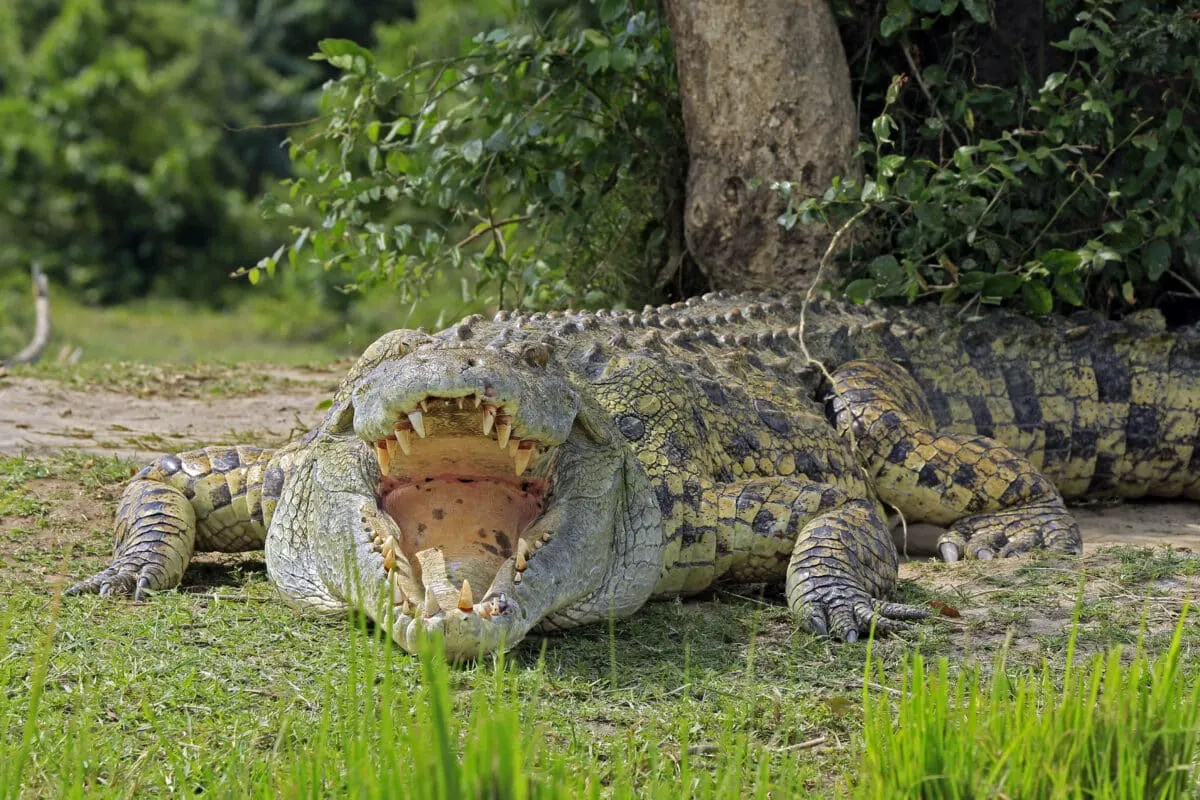Welcome to Animals that Start with N.
There are many exciting animals whose names begin with the letter N. We’ve compiled a detailed list of these animals, including mind-blowing facts, scientific names, and locations.
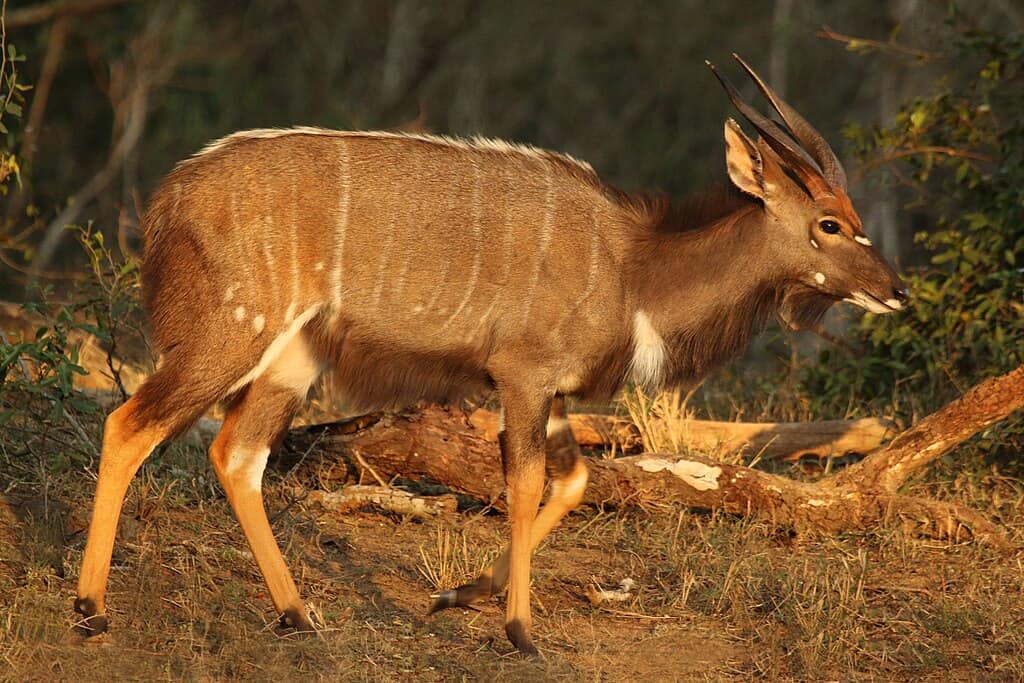
We hope you will enjoy this article about Animals that Start with N.
Overview of Animals that Start with N
Explore our complete guide to animals that start with N. From the illusive Natal Ghost Frog to the noble Narwhal, discover creatures great and small.
1. Naked Mole Rat
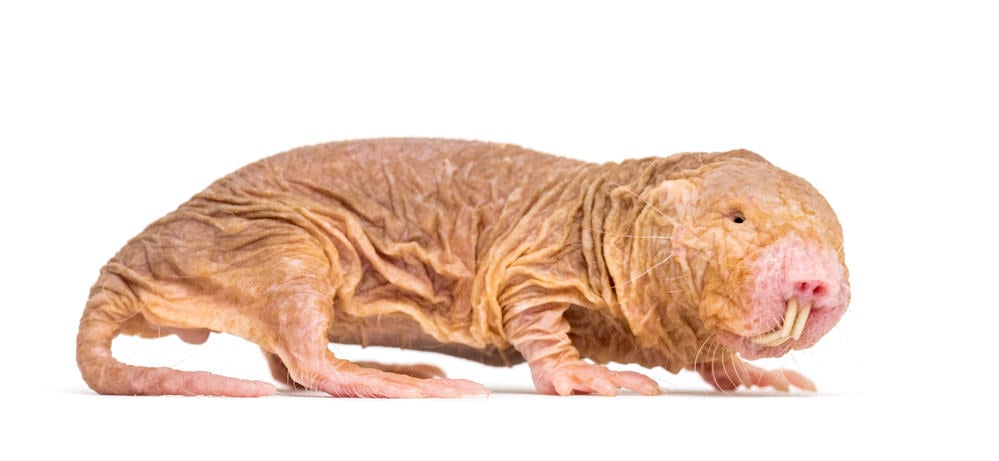
| Scientific Name | Cryptomys damarensis |
| Where It Lives | Eastern Africa, such as Ethiopia, Kenya, Djibouti and Somalia |
| What It Eats | The roots and underground parts of succulent tubers that grow in arid areas. They also do not drink but hydrate through their food. |
| Conservation Status | Least Concern (LC) according to the IUCN Red List |
Fun Fact: The Naked mole rat can survive without oxygen for 18 minutes.
The Naked Mole Rat lives up to its name, with none to little hair and crimped pallid skin. These odd-looking creatures live in Eastern Africa, exclusively in underground tunnels and burrows in grassy, semi-arid regions.
These wrinkly pinked-skinned rodents are highly social creatures. In each colony, there is a queen who is the sole breeder, while the other male and female naked mole rats spend their lives working for the colony. Quite unusual for mammals! Also unusual for mammals, they cannot regulate their body temperature and have to huddle close together to keep warm. Sometimes the naked mole rat will also bake in their shallow tunnels warmed up by the sun above ground.
2. Natal Ghost Frog
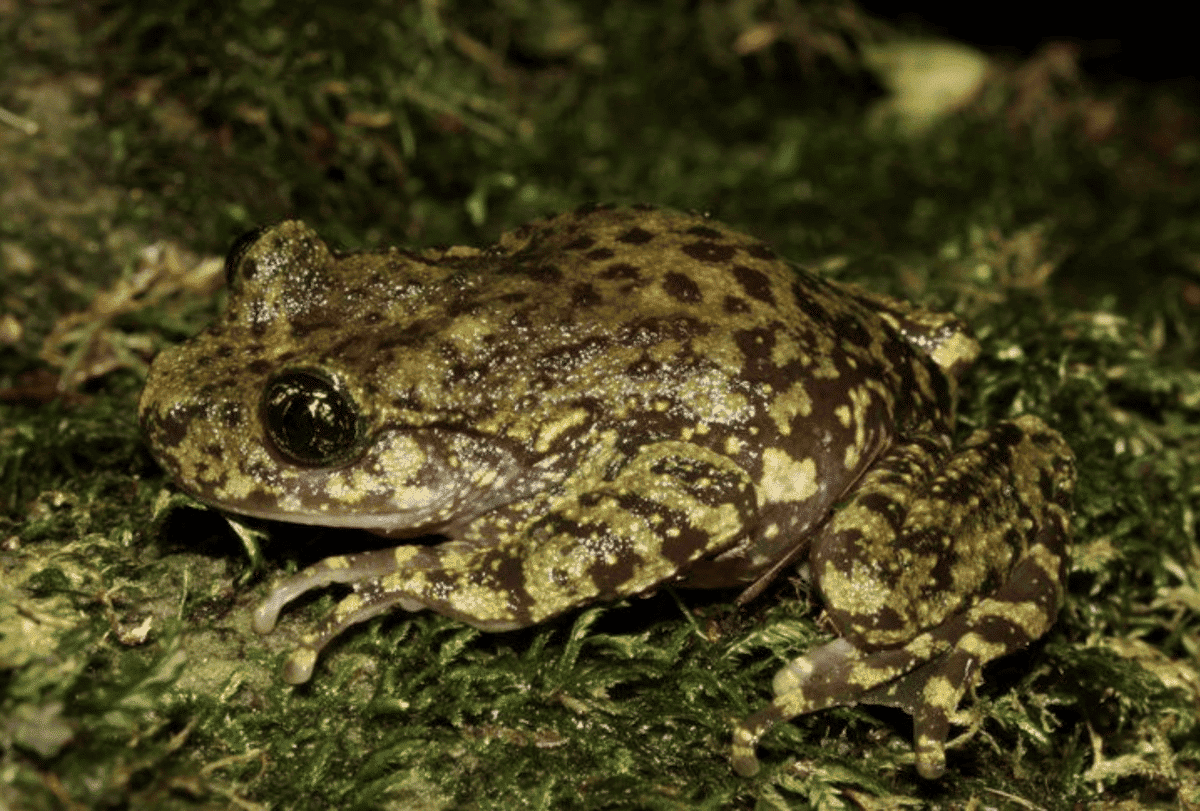
| Scientific Name | Hadromophryne natalensis |
| Where It Lives | Eastern South Africa, primarily in the Natal Drakensberg Mountains |
| What It Eats | Anthropods, insects and spiders |
| Conservation Status | Near Threatened (NT) according to the IUCN Red List |
Fun Fact: Natal Ghost Frogs have a unique ability to climb even vertical surfaces, thanks to their specialized toe pads.
The Natal Ghost Frog, a fascinating amphibian, resides in the misty highlands of Eastern South Africa, especially within the lush landscapes of the Natal Drakensberg Mountains.
Belonging to the family Heleophrynidae, this elusive creature thrives in pristine, fast-flowing mountain streams, a habitat that’s as enigmatic as the frog itself. Classified as Near Threatened by the IUCN Red List, the Natal Ghost Frog’s existence is delicately balanced on the edge, primarily due to habitat loss and pollution. In the food chain, it plays a vital role, with both tadpoles and adults preying on insects and other small invertebrates, maintaining the ecological equilibrium of their riverine homes.
3. Natterjack Toad
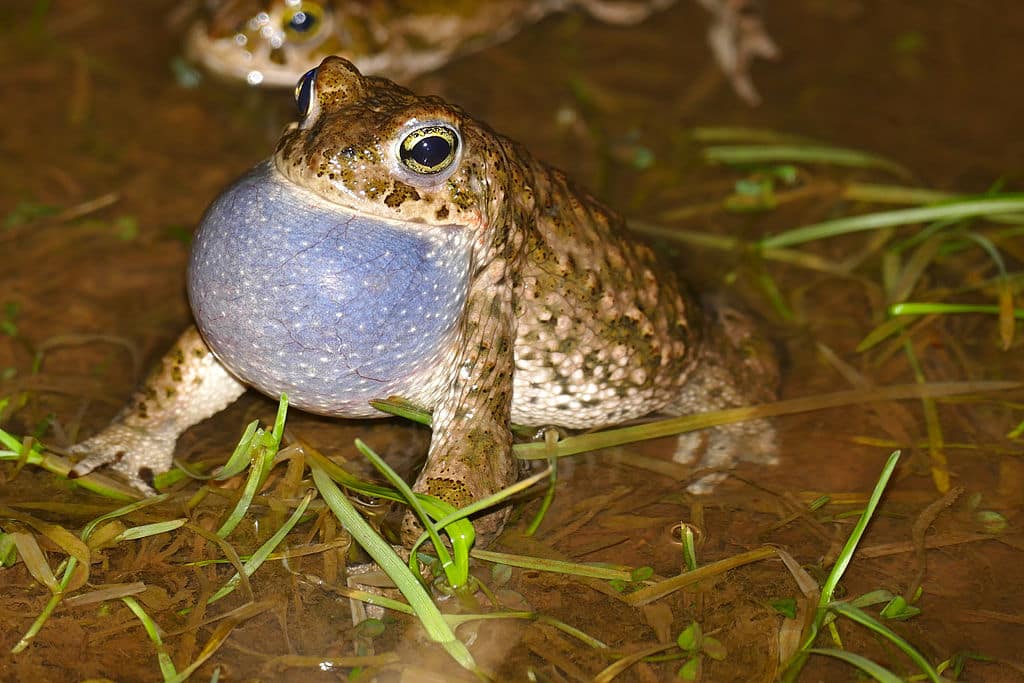
| Scientific Name | Epidalea calamita |
| Where It Lives | Sandy and heathland areas in Europe, such as Brittian, Ireland and Scotland |
| What It Eats | Tadpoles eat aquatic plant matter and adults eat invertebrae. |
| Conservation Status | Least Concern (LC) according to the IUCN Red List |
Fun Fact: Although the Natterjack toad is small, an adult male’s call can be heard a mile away!
The Natterjack toad, smaller than the common toad lives in coastal marshes, sand dunes and sandy heath areas in Britain, Ireland and Scotland.
These nocturnal amphibians breed in temporary, shallow and warm pools on sand dunes and sandy heaths. Although small, the Natterjack toad lies its eggs in impressive strings of 3 to 6.6 feet long! Of which one string can hold up to 7,500 eggs. During springtime, the adult males will attract females to breeding pools by croaking very loudly! Even though they are classified as Least Concern by the IUCN Red List, it has become extremely rare to see one in some areas of Europe. Luckily re-introduction programmes have been put in place to restore their population rage.
4. Narwhal
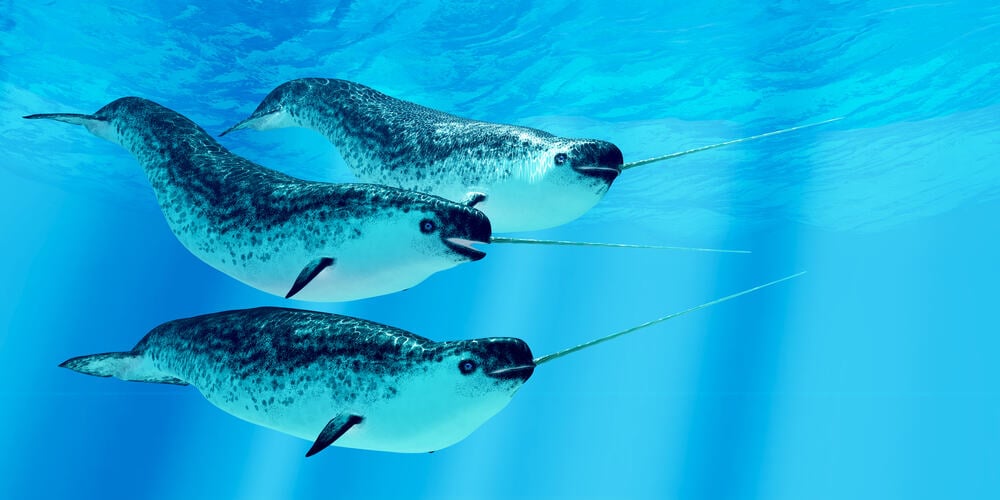
| Scientific Name | Monodon monoceros |
| Where It Lives | Arctic waters of Canada, Greenland, Norway, and Russia. |
| What It Eats | Shrimp, Greenland halibut, polar and artcic cod and Gonatus squid |
| Conservation Status | Least Concern (LC) according to the IUCN Red List |
Fun Fact: The Narwhal’s horn was an important cultural symbol for the Vikings, English, Scottish, and Inuit. The horn was said to harness magical elements and cure.
The Narwhal whale, a mystical mammal, is found in the Northern Atlantic and the Arctic Ocean waters.
The special breed of whales belongs to the family Monodontidae, who travel further up North than any other whale species. Having a status of least concern on the IUCN Red list indicates their strong numbers. However, habitat loss due to weather changes should be of concern. The Narwhal whales’ most eye-catching feature is their long spiraled tusk projecting from their heads. These elongated tusks are hollow teeth, spiraling counterclockwise from the left side of the skull. Narwhals are the only whales that sport these unicorn-like features, measuring up to 9 feet in length!
5. Nematodes
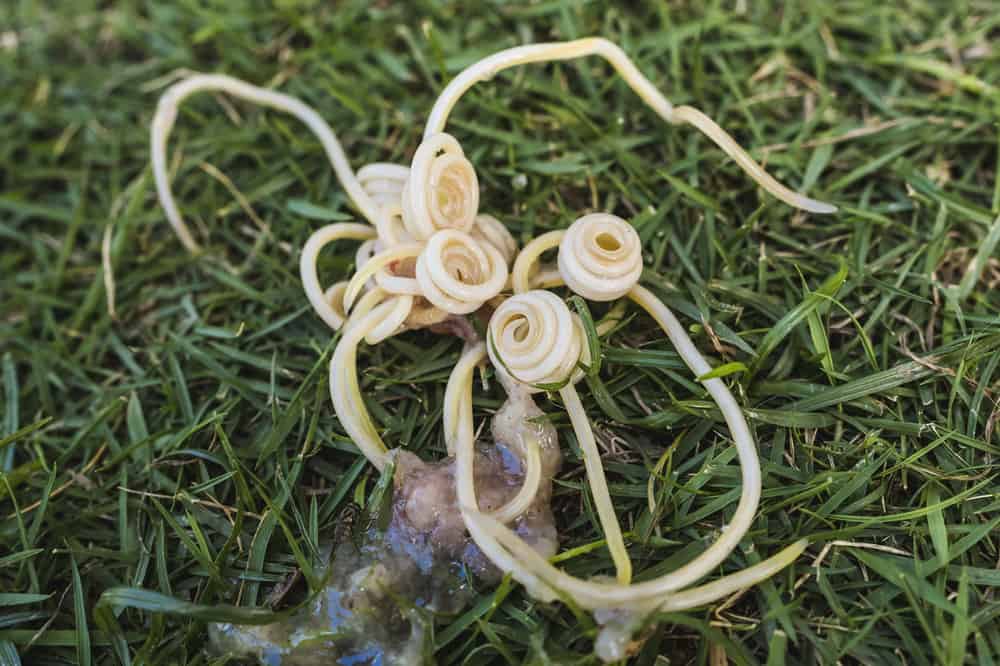
| Scientific Name | Nematoda spp. |
| Where It Lives | Practically in all environments |
| What It Eats | Most eat fungi, bacteria and other microscopic organisms |
| Conservation Status | Least Concern (LC) according to the IUCN Red List |
Fun Fact: Nematodes have the highest population among animals. About 80 percent of animals are nematodes.
Nematodes, any worm in the phylum Nematoda, are the most abundant animal on earth and can be found practically everywhere!
Nematodes live as parasites within other organisms, such as humans and animals, where they feed on the microorganisms in their bodies and cause illnesses. Free-living forms of nematodes are found in soil, water, and even in vinegar and beer malts. There are likely many more free-living forms not yet discovered, as researchers spend more time researching parasitic nematodes that lead to medical issues in humans and animals. Nematodes have long tube-like bodies with tapered ends, in fact, the nematode species that reside within sperm whales are about 13m in length!
6. Nene
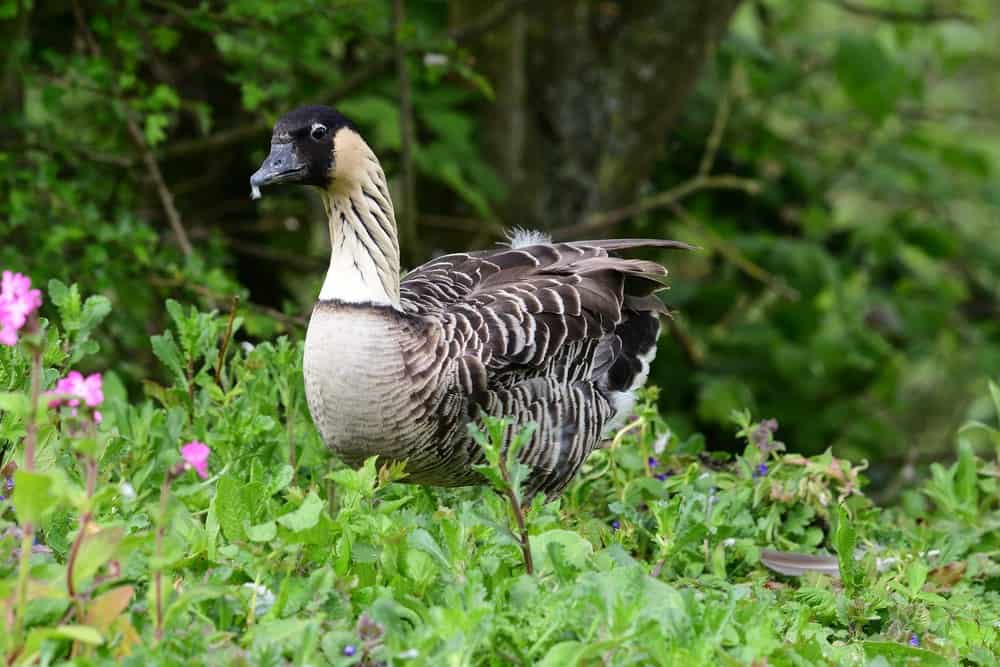
| Scientific Name | Branta sandvicensis |
| Where It Lives | Hawaiian Islands |
| What It Eats | Grasses, leaves, berries, flowers and seeds |
| Conservation Status | Near Threatened (NT) according to the IUCN Red List |
Fun Fact: The nene has escaped the threat of extinction with the help of English conservationist Peter Scott, who helped breed them back to healthy numbers.
The Nene, commonly known as the Hawaiian goose, has been the official Hawaiian state bird since 1957. These geese live in a variety of habitats, including grasslands, coastal dunes, scrub forests, volcanic slopes and lava plains.
Nenes, classified as near threatened today, were once very close to extinction. But after successfully breeding them and releasing them in the wild, their numbers are now increasing! Although Hawaiian geese are more terrestrial than other geese, spending most of their time on the ground, they are capable of flight and swimming when they want to. Nenes are one of the animal species that mate for life, and will often revisit their breeding nests year after year.
7. Newfoundland
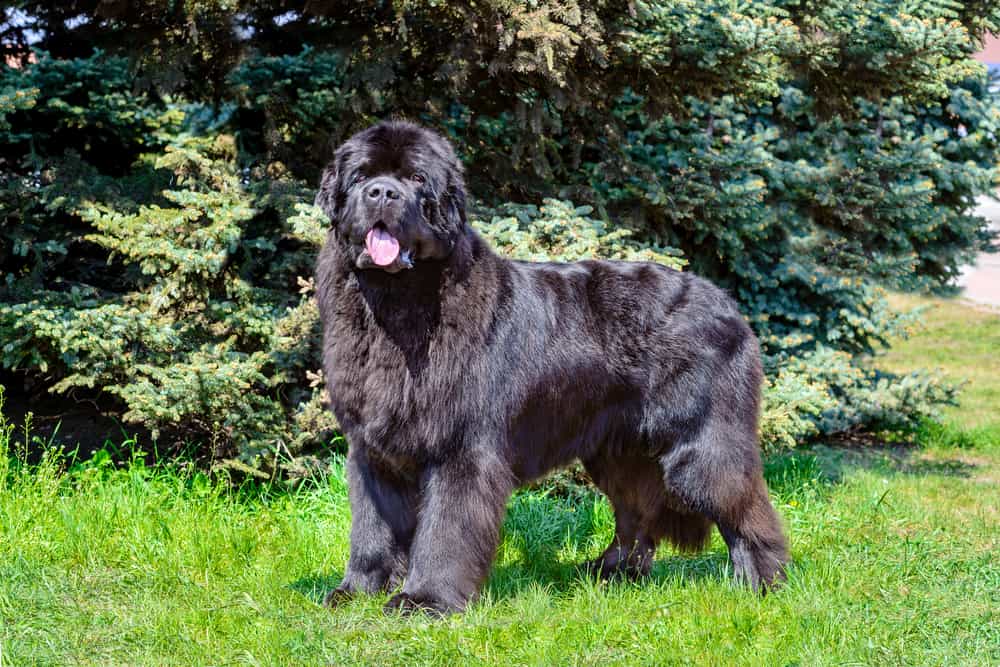
| Scientific Name | Canis lupus |
| Where It Lives | Originated in Newfoundland, Canada |
| What It Eats | High-quality dog food and animal protein sources |
| Conservation Status | Not Endangered |
Fun Fact: Newfoundlands were first bred by Vikings more than a thousand years ago.
The Newfoundland is a hardworking and talented guard dog. They originate from Newfoundland, a Canadian province, and were named after their origin!
The Newfoundland dog was bred to rescue drowning fishermen from the icy cold waters in and around Newfoundland. And till this day they are avid water rescuers. Newfoundlands have characteristic webbed feet and thick and oily fur coats, and incredible lung capacity that all contribute to their excellent swimming abilities. Despite their large muscular build, they are gentle and patient dogs. Besides being rescue dogs, Newfoundlands are great watchdogs and companions to their owners.
8. Newt
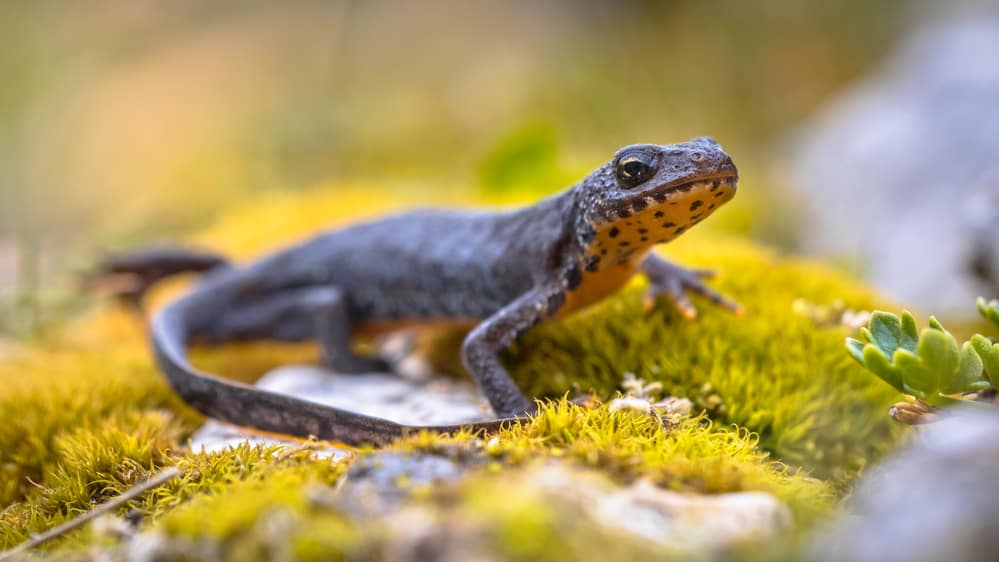
| Scientific Name | Pleurodelinae |
| Where It Lives | Asia, Northern Africa, North America, and Europe |
| What It Eats | Leeches, insects, tadpoles, slugs and worms |
| Conservation Status | Least Concern (LC) according to the IUCN Red List |
Fun Fact: Newts can re-grow damaged limbs, eyes, and intestines.
Newts, small-sized amphibians, are mostly found in the Northern Hemisphere in humid, cover-rich areas on land. However, adult newts return to water areas once a year to breed.
These distinctive members of the salamander family alternate between aquatic and terrestrial habitats. They metamorphose through three stages, namely aquatic larva, terrestrial juvenile and adult with lizard-like bodies. These small creatures are mostly carnivores who eat tadpoles, slugs, worms and other insects. Although newts are animals of Least Concern according to the IUCN Red List, some species experience habitat loss due to fragmentation and pollution. One species, the Yunnan Lake Newt, is already extinct.
9. Nicobar Pigeon
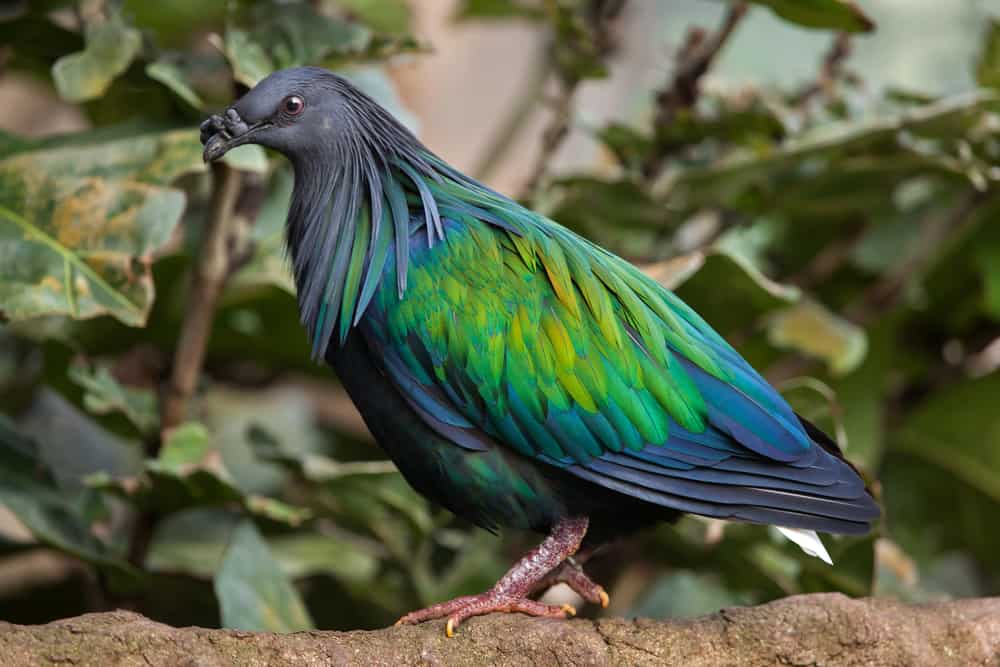
| Scientific Name | Caloenas nicobarica |
| Where It Lives | Small dense forested islands from Indian Andamans to the Solomons and New Guinea |
| What It Eats | Seeds, buds, fruit and occasional insect |
| Conservation Status | Near Threatened (NT) according to the IUCN Red List |
Fun Fact: It is believed that they are the closest surviving relative of the poor dodo.
The Nicobar pigeon, with its stunning colors, lives in rainforests, mangroves, dry forests and shrublands across Asia and Oceania.
These pigeons are nomadic animals who freely roam from island to island in their flocks. Nicobar pigeons spend most of their days on the ground looking for food but don’t let that fool you, they are powerful flyers! But unlike other pigeons, they do not fly in a loose flock. They fly in columns or single file. These spectacular glittery feathered birds are classified as near threatened, as they are commonly hunted for food and their gem-like gizzard stone, which is often used for jewelry.
10. Nigerian Dwarf Goat
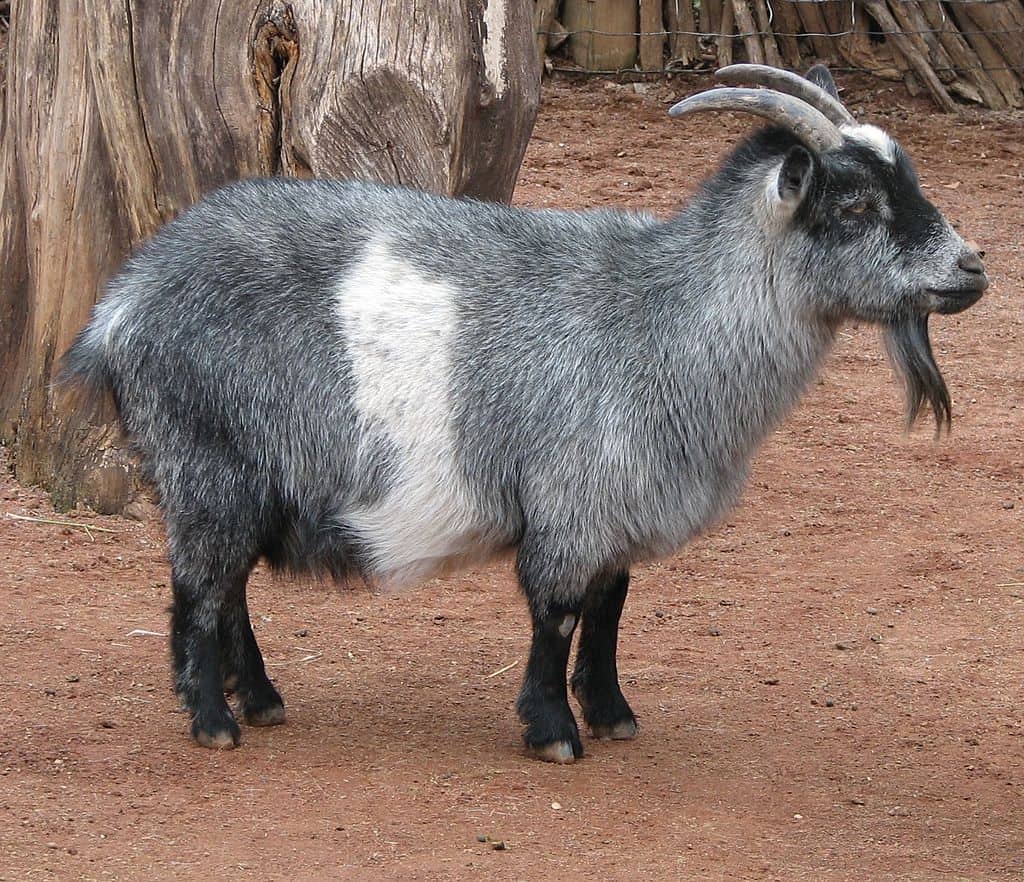
| Scientific Name | Capra aegagrus hircus |
| Where It Lives | Origin in West Africa but ranges worldwide |
| What It Eats | Hay, browse and grain |
| Conservation Status | Not Endangered |
Fun Fact: It is one of the most expensive goat species in the world.
The Nigerian Dwarf Goat is a highly adaptable species. Natively found in the countryside and lowlands of West Africa where it tolerates hot and dry weather. While adapting to colder climates by growing out their thick wool coats.
The little Nigerian goat is a descendant of West African Dwarf breeds. They are naturally with or without horns and have coats of many different colors. Originally from West Africa, they have found homes across America as well. Where they are not just raised for their milk, which is high in fat and protein giving it a sweet taste, but also as companion animals.
11. Nighthawk
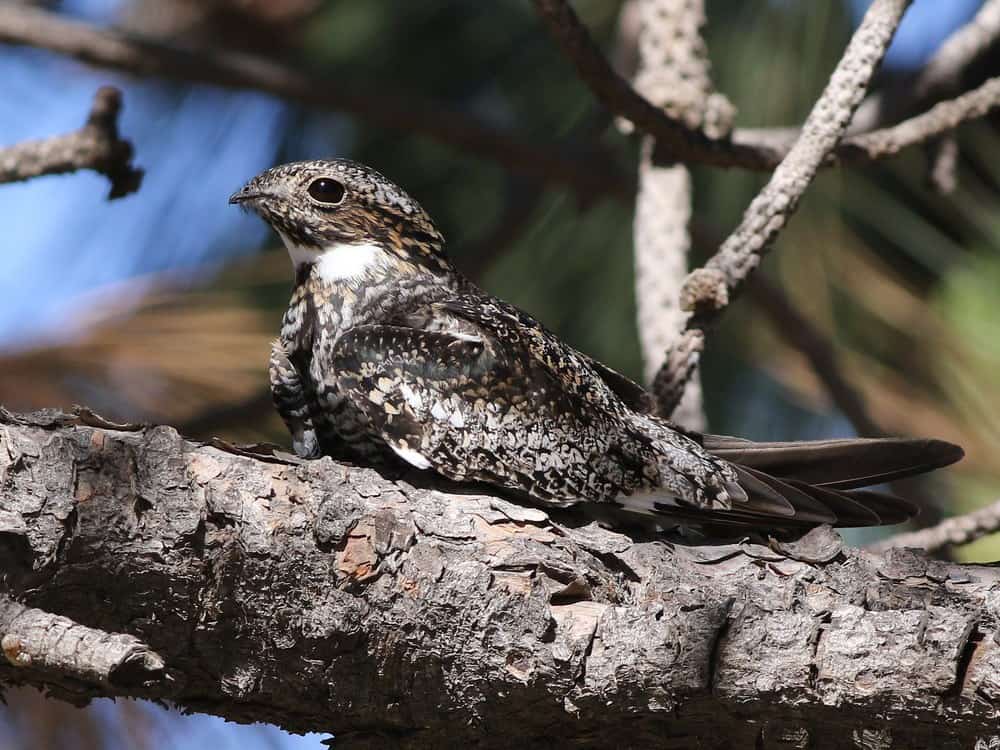
| Scientific Name | Chordeiles minor |
| Where It Lives | Majority of North America |
| What It Eats | Flying insects |
| Conservation Status | Least Concern (LC) according to the IUCN Red List |
Fun Fact: The oldest Nighthawk recorded was a female of 9 years – much older than their average 5-year lifespan!
The common Nighthawk has one of the most extensive migration routes of all North American birds and has been spotted in the Faroe Islands, British Isles, Iceland, Greenland and the Azores.
These birds can be found in deserts, grasslands, savannahs, and beach scrubs and are drawn to cities by the insect populations there. Common Nighthawks look for prey in the early mornings and evenings, with very little light, yet still, they snap up flying insects with their tiny beak! When courting a female, the male Nighthawk partakes in dramatic dives toward the ground, turning back up just meters from the ground. Funnily enough, their name is deceptive, as these birds are not closely related to hawks or strict night animals.
12. Nightingale
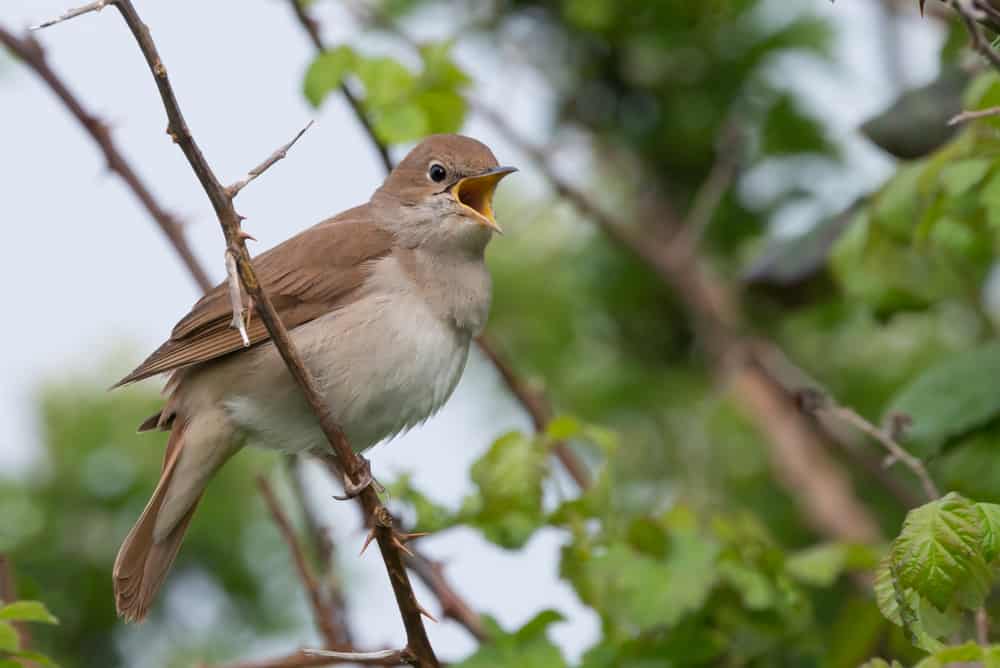
| Scientific Name | Luscinia megarhynchos |
| Where It Lives | Europe, Asia and Africa |
| What It Eats | Insects like ants and beetles |
| Conservation Status | Least Concern (LC) according to the IUCN Red List |
Fun Fact: Nightingales are commonly believed to sing at night. However, only the unpaired males sing at night.
The nightingale, mostly known for their beautiful melodies, breeds in scrub and forest areas in Europe, Asia and Northwest Africa and migrates to Sub-Saharan Africa during the winter months.
Nightingales are shy, solitary birds often found hiding in bushes and scrubs. Where they forage on the ground for food. Their diet of insects plays a major role in their ecosystem, as they control insect populations that can cause harm to leaves and tree growth. Not only is their powerful song the inspiration behind many fairytales, poetry and operas, but it also plays a role in their mating rituals and territory defending.
13. Nile Crocodile
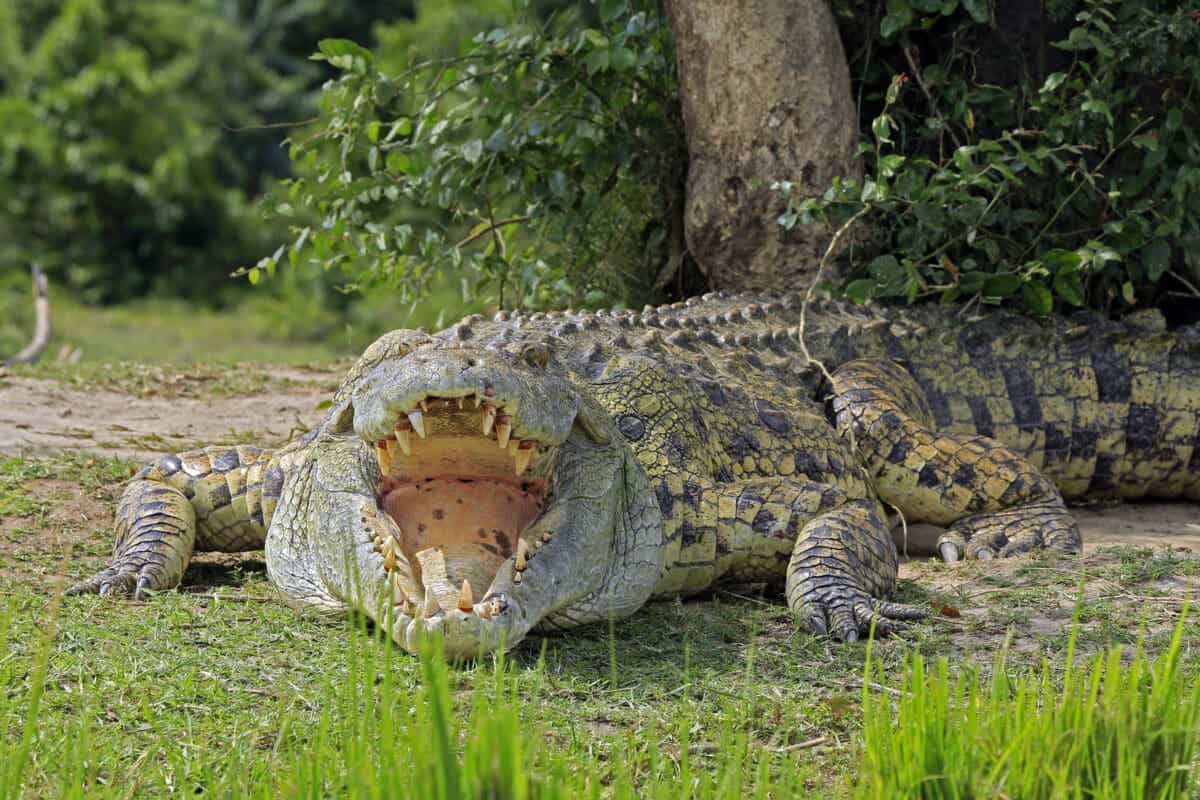
| Scientific Name | Crocodylus niloticus |
| Where It Lives | Across Sub-Saharan Africa. Most common in southern, central and eastern regions of Africa and western Madagascar. |
| What It Eats | Fish, land mammals, amphibians and insects |
| Conservation Status | Least Concern (LC) according to the IUCN Red List |
Fun Fact: A female Nile crocodile protects her young from predators by hiding them in a special pouch in her throat called a gular pouch.
The large carnivorous Nile Crocodiles live in a wide range of water-based habitats. Although they mostly prefer freshwater sources, they have salt glands that allow them to occasionally enter marine and coastal waters.
The Nile crocodile is a solitary animal and is mostly active during the night. During the day you will find them lazing in the sun or cooling down in the water. Male Nile crocodiles are very territorial and patrol their territories throughout the night. When the Nile crocodile feels danger it can stay underwater for up to 30 minutes. And when they remain completely still and inactive they can hold their breath for up to two hours!
14. North American Beaver
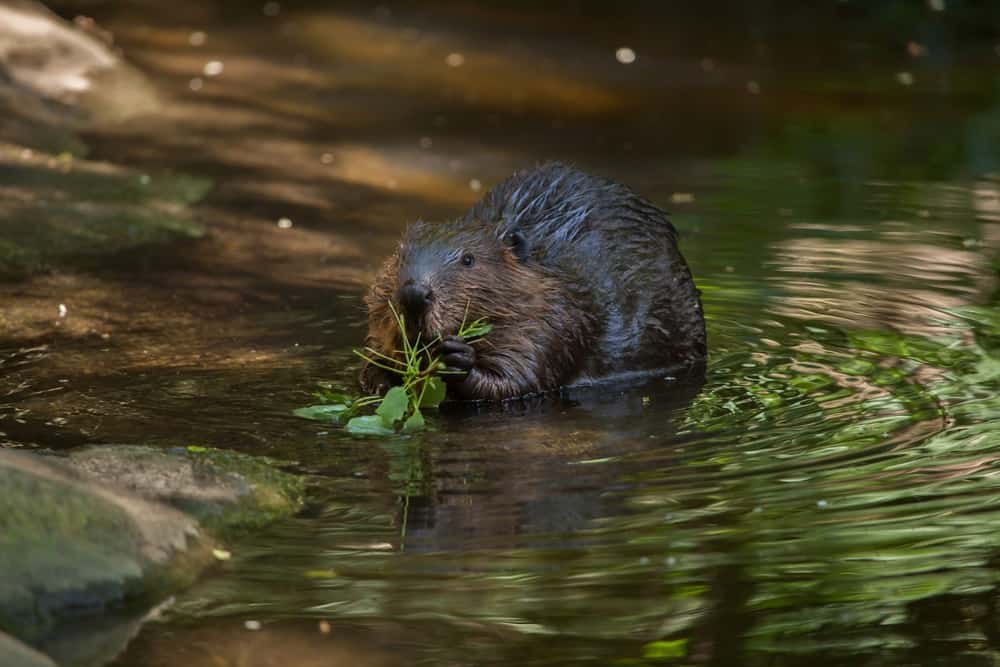
| Scientific Name | Castor Canadensis |
| Where It Lives | Native to North America, but found in South America, Asia and Europe |
| What It Eats | Tree bark, leaves, twigs, shoots and aquatic plants |
| Conservation Status | Least Concern (LC) according to the IUCN Red List |
Fun Fact: North American Beaver’s teeth never stop growing! They gnaw on trees to stop them from growing too long.
The North American Beaver, a highly social creature, lives in streams, lakes, rivers, ponds and other wetland areas in North and South America, Asia and Europe.
These semiaquatic creatures are well adapted to their environment and lifestyle. With its waterproof fur, insolating fat layer, webbed feet, large paddle-shaped tail, ears and nostrils sealing underwater and the nictitating membrane covering their eyes making them able to see underwater! Even their lips seal behind their front teeth so they can continue to gnaw at trees underwater. No wonder the North American Beaver can build such strong dams at impressive speeds!
15. Northern Leaf-Tailed Gecko
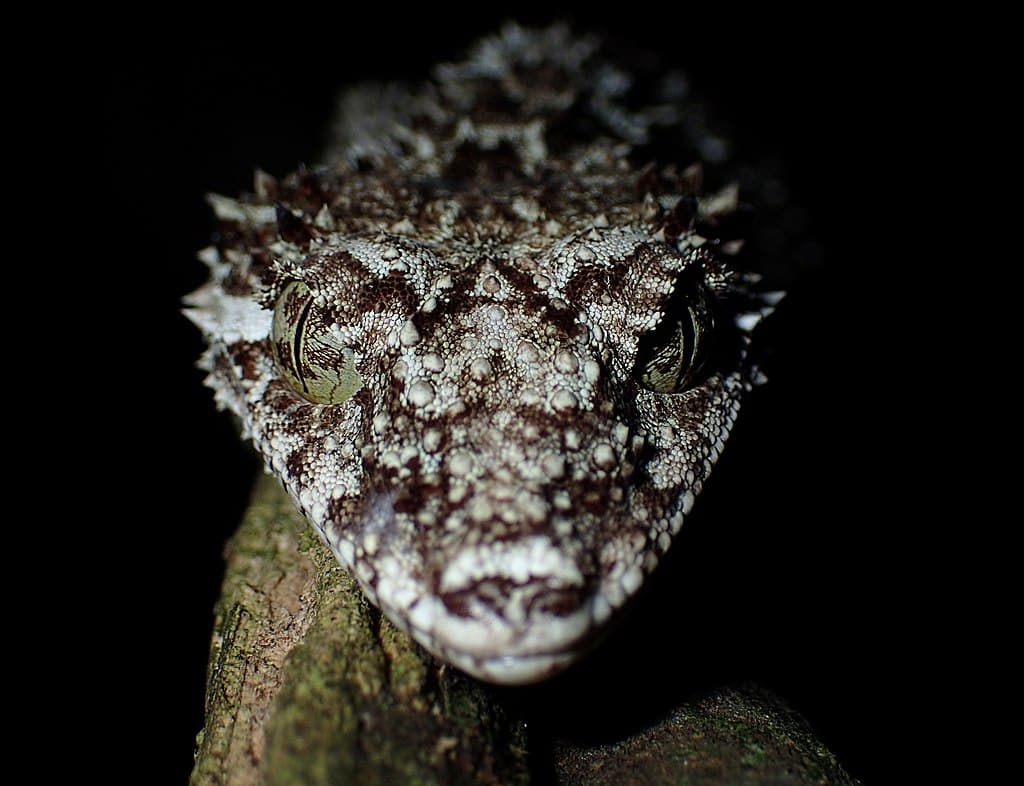
| Scientific Name | Saltuarius cornutus |
| Where It Lives | Australia |
| What It Eats | Large insects and anthropods like spiders and cockroaches. |
| Conservation Status | Least Concern (LC) according to the IUCN Red List |
Fun Fact: It is the biggest gecko in Australia.
The Northern leaf-tailed gecko prefers tropical and warm temperate rainforests, as well as sclerophyll forests in Australia.
These nocturnal tree dwellers are not afraid to shake off their tails when they are attacked. Luckily, they will easily grow another. However, the new tail will be flatter and broader, have different colors, and have a shorter tip than the original tail. Though they lack adhesive pads on their feet, their clawed toes are suited for tree climbing. These beautiful, yet slightly intimidating reptiles feed mostly on large insects and anthropods they find in their habitat.
16. Northern Night Monkey
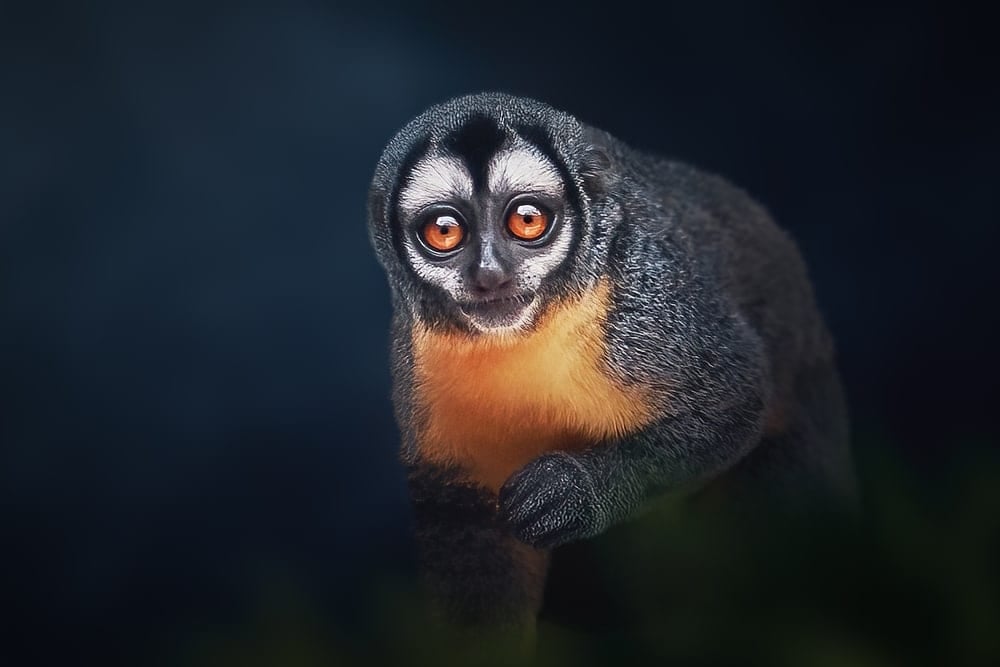
| Scientific Name | Aotus trivirgatus |
| Where It Lives | Venezuela and north-central Brazil |
| What It Eats | Nuts, fruit, leaves, insects, bird eggs |
| Conservation Status | Least Concern (LC) according to the IUCN Red List |
Fun Fact: Night monkeys have intriguing colored faces and are active only at night.
The Northern Night Monkey, with their striking faces, are found in woodland and rainforest areas in northern Brazil and Venezuela. These monkeys are also known as the northern owl monkeys or the northern three-striped night monkey.
These stunning little monkeys weigh about 800 grams and have tails the same length of their bodies. True to their name, Northern Night Monkeys are mostly active during the night and can see in low-light conditions. They are also known to form monogamous pairs and raise their young together until they are ready to take on the world at around 3 or 4.
17. Northern Pike
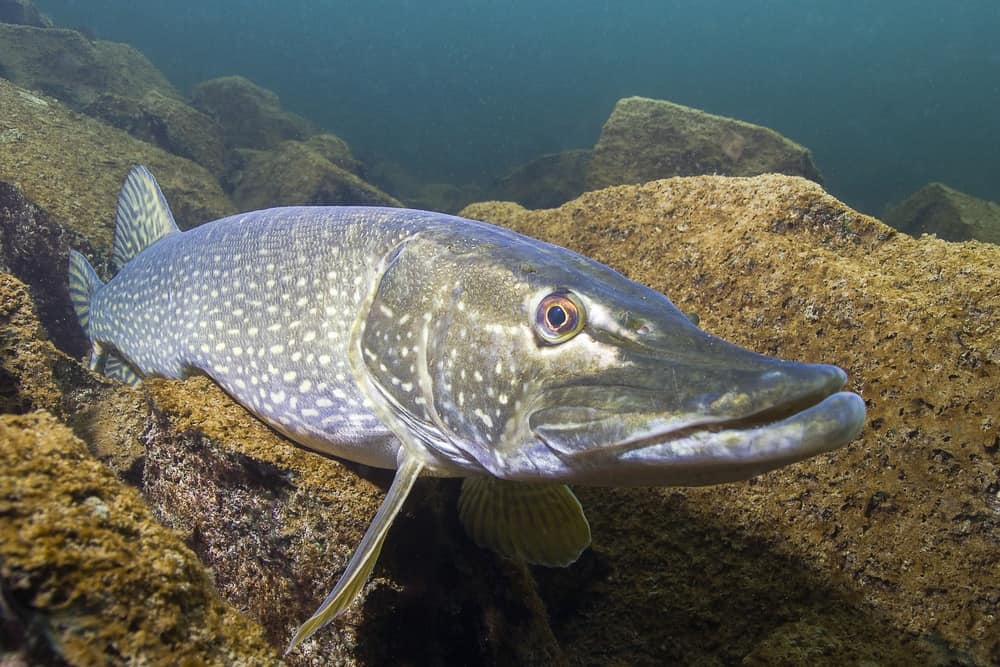
| Scientific Name | Esox lucius |
| Where It Lives | Fresh and moderately salty waters in the Northen Hemisphere |
| What It Eats | Mostly other fish |
| Conservation Status | Least Concern (LC) according to the IUCN Red List |
Fun Fact: Northen Pike are carnivorous and will eat about any living thing that will go down its throat!
The Northern Pike, large and carnivorous, lives in almost all types of freshwater habitats from warm shallow ponds to icy deep lakes.
Northern Pike’s are solitary and extremely aggressive fish. With their sharp teeth and complex skull and jaw structure they eat almost anything. From other fish to crayfish, to birds and even small mammals! They lurk in the water, laying extremely still while waiting for their prey to come by. When prey approaches they accelerate at impressive speeds to strike!
18. Norwegian Buhund
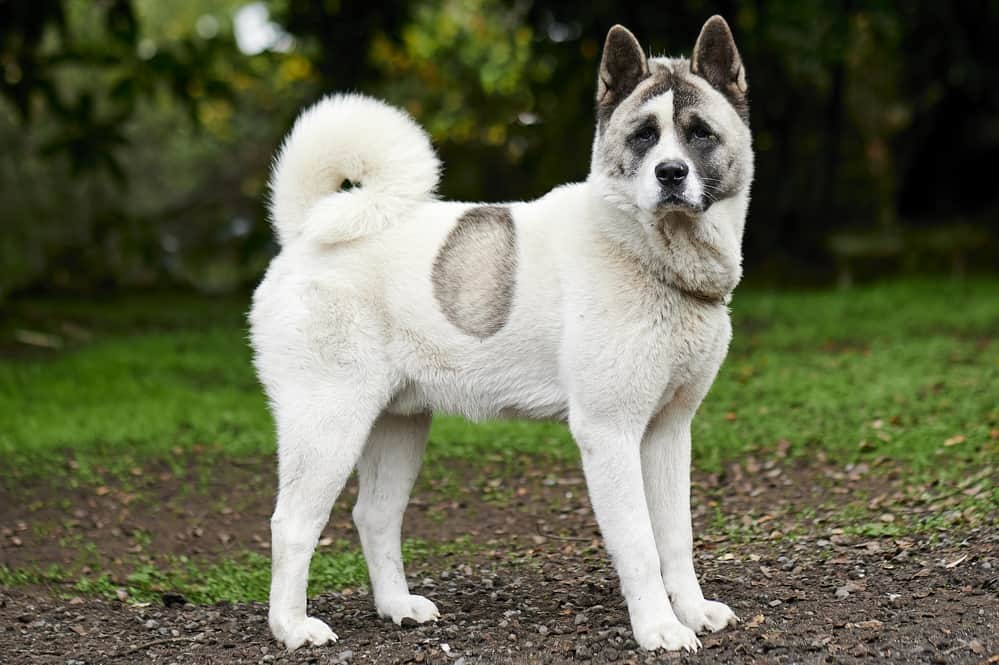
| Scientific Name | Canis lupus |
| Where It Lives | Origin in Norway |
| What It Eats | High-quality dog food, and animal proteins |
| Conservation Status | Not Endangered |
Fun Fact: The Norwegian Buhund was once employed in Nurse homesteads.
The Norwegian Buhund as we know it today, was bred on Norway’s rainy western coastlands. They are a spitz-breed, meaning that they are a cold-weather breed with a thick coat, curvy tail and pointy (hence spitz!) ears.
The Norwegian Buhund breed are extremely cheerful, intelligent and active dogs. They are great watch and herding dogs and are commonly used on farms for these purposes. Their name even translates to farm dog! No wonder they were used by the Vikings – some Norweigian Buhund remains have even been found in Viking graves that date back to 900AD.
19. Norwegian Elkhound
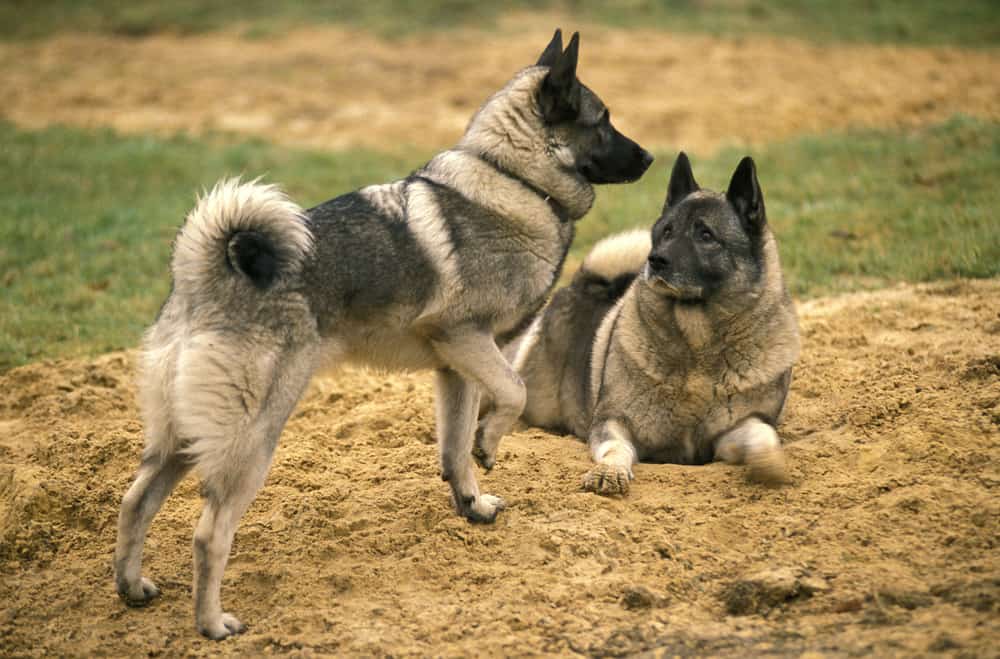
| Scientific Name | Canis lupus |
| Where It Lives | Origin in Norway |
| What It Eats | High-quality dog food, and animal proteins |
| Conservation Status | Not Endangered |
Fun Fact: They were the Vikings’ favorite travel dogs.
The Norwegian Elkhound is the National Dog of Norway and one of the oldest dog breeds in Europe.
These affectionate, loyal and intelligent dogs are also extremely adventurous and remarkably agile. Making them committed watchdogs in addition to being friendly companions. Elkhounds were bred as hunters for large animals such as bears, wolves, and moose. And they did a great job! Their high energy and stamina allow them to jump around the game they’re hunting for as long as needed for their owner to arrive.
20. Norwich Terrier

| Scientific Name | Canis lupus |
| Where It Lives | Origin in England |
| What It Eats | High-quality dog food, and animal proteins |
| Conservation Status | Not Endangered |
Fun Fact: They are small but feisty animals!
The Norwich terrier, small yet lively, originated in England in the 19th century. They were originally bred to eliminate rodents, but these days they are experienced as cute and loving companions. They even keep your home and garden free from rodents!
These prickly-eared dogs are one of the smallest terriers, and are also quite rare and expensive. This is due to their small litter size and the common need for c-section births. At a stage the Norwich terrier was known as the Jones Terrier, after Frank Jones who brought them to the U.S. Where he discovered that not only do they enjoy hunting rodents, but are excellent companions to Foxhounds hunting foxes.
21. Nubian Goat
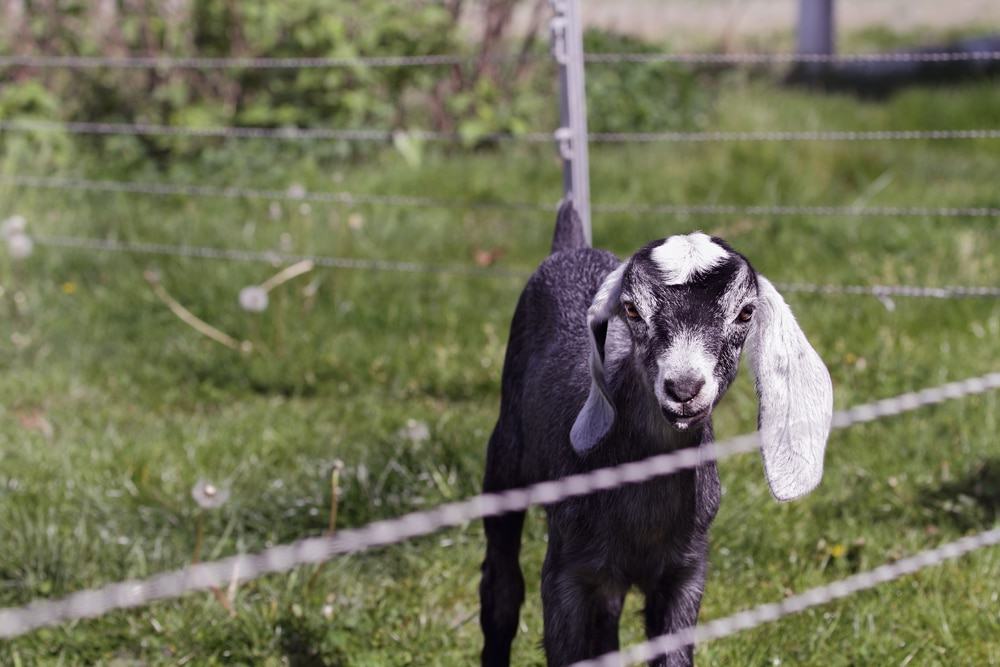
| Scientific Name | Capra aegagrus hircus |
| Where It Lives | Europe |
| What It Eats | Variety of grasses, grains and hay |
| Conservation Status | Not Endangered |
Fun Fact: Nubian goats are highly fertile and maintain fertility for their entire lives.
The Nubian goat is a goat species descendant from Africa, the Middle East, and Britain. This mixed breed was one of the first domesticated animals!
These long floppy-eared goats live in groups led by their matriarch. Hierarchy within the group is established by rearing and head-butting to determine dominance in the group. Often accompanied by the stomping of one front-foot and a high-pitched sneezing sound. Reaching sexual maturity between the ages of 3 and 12 months it is not uncommon for twins, or even triplets, to be born. Nubian goats also produce rich milk, often used for cheese, and are often kept on dairy farms.
22. Numbat
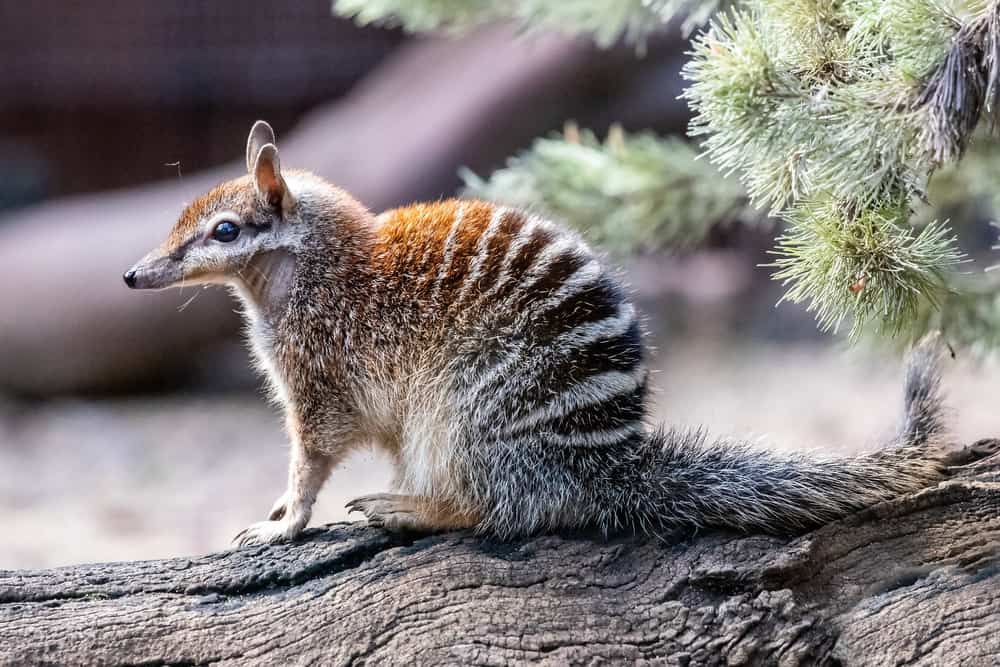
| Scientific Name | Myrmecobius fasciatus |
| Where It Lives | Australia |
| What It Eats | Termites |
| Conservation Status | Endangered (EN) according to the IUCN Red List |
Fun Fact: Their tongues are sticky and about 4.4 inches long!
The Numbat, once widely distributed across Australia, only survived in two small areas in Western Australia. Making their home in woodland areas with lots of fallen hollow trees that provide shelter and foraging opportunities.
These endangered marsupials feed almost exclusively on termites, which they grab with their sticky 4-inch long tongues in holes and tiny cavities in logs and small holes. They also don’t have proper teeth, but small blunt pegs – luckily they don’t chew their food! Numbats also don’t need access to a water source, because they receive all the liquid they need from the termites they eat. Apart from breeding season numbats are solitary animals, as termites are difficult to find, nonetheless share!
23. Nurse Shark
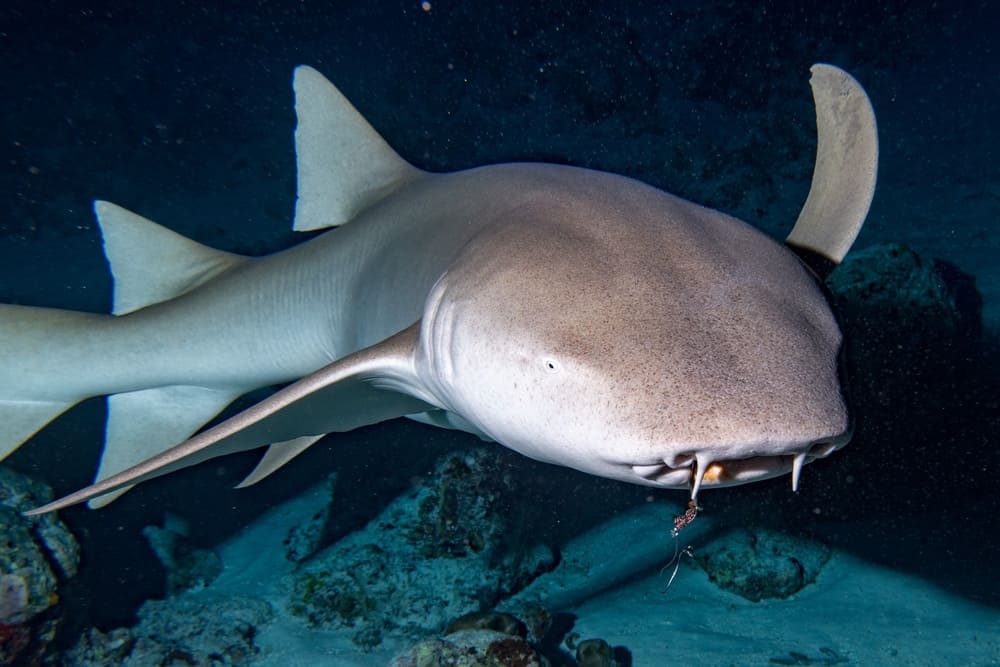
| Scientific Name | Ginglymostoma cirratum |
| Where It Lives | Tropical to warm waters of the eastern Pacific and eastern and western Atlantic oceans |
| What It Eats | Fishes, rays and invertebrae |
| Conservation Status | Vulnerable (VU) according to the IUCN Red List |
Fun Fact: Nurse Sharks have the smoothest skin among shark species.
Nurse sharks are commonly seen in coral and rocky reefs in the eastern Pacific Ocean and the eastern and western Atlantic oceans.
These function feeders spend most of the day resting in caves or under ledges, but during twilight hours and at night they are more active in search of prey. Their suction is powerful enough to such a queen conch straight out of the shell, and like many other suction feeders, they swallow their food whole. Besides their distinctive round heads, small eyes and barbels, Nurse sharks are also known for their yellow-brown color. Cases have been reported where they bite divers who startle them awake – purely a defensive reaction as these are gentle sharks.
24. Nutcracker
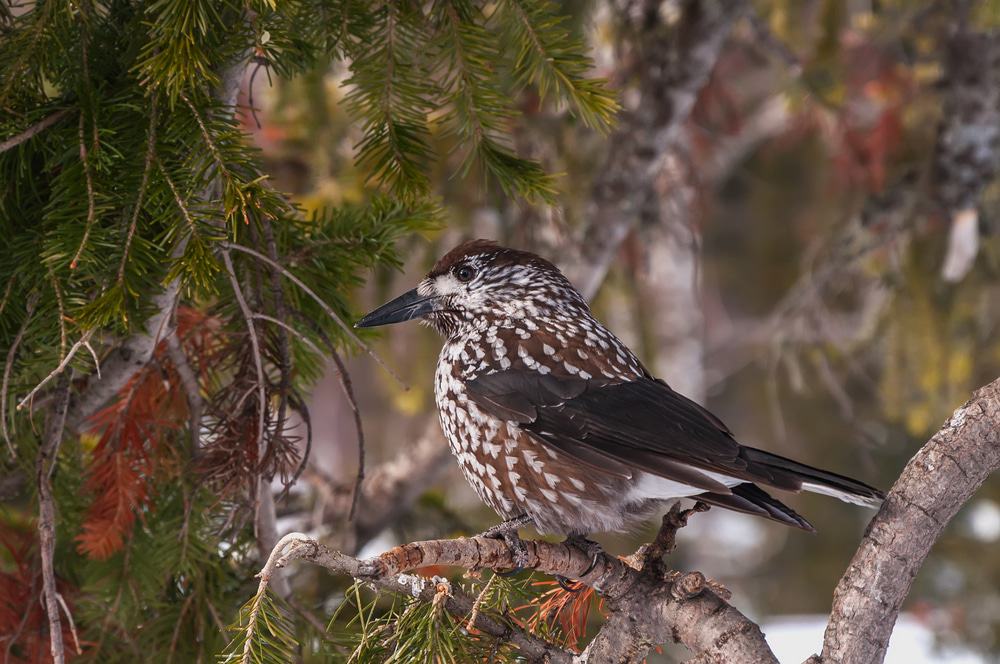
| Scientific Name | Nucifraga |
| Where It Lives | Europe, Asia, the Himalayas and western North America |
| What It Eats | Pine nuts |
| Conservation Status | Least Concern (LC) according to the IUCN Red List |
Fun Fact: Nutcrackers will store seeds up to 20 miles away from their parent plants.
There are three Nutcracker species, namely the Spotted Nutcracker, the Kashmir Nutcracker, and Clark’s Nutcracker. All of these are migrating birds, meaning they move to warmer climates to escape winter cold.
Nutcrackers have specialized beaks for extracting seeds from pine cones, and in areas where these do not occur seeds from hazelnuts and spruce fill their diet. These birds always store excess seeds they gather for later use, and some store as many as thirty thousand per season! This habit plays an important role in re-establishing forests and is their contribution to the fight against climate change.
25. Nyala

| Scientific Name | Tragelaphus angasii |
| Where It Lives | Southern Africa |
| What It Eats | Foilage, fruits, flowers and twigs |
| Conservation Status | Least Concern (LC) according to the IUCN Red List |
Fun Fact: Nyalas sometimes follow baboons and eat the fruit and leaves the baboons drop from trees.
The spiral-horned Nyala lives in areas with dense lowland woodlands, thickets and lush green rivers across southern Africa. They choose territories with high-quality grasslands and freshwater sources nearby.
Only male Nyalas have spiral horns, which grow as they age, producing one, two, or even three spirals. These antelopes, both male and female, have ten or more white stripes across the side of their body, although the stripes fade in older males. Nyalas often live in groups of about ten, which can be only males, only females, or mixed. These antelopes aren’t very territorial and the groups’ territories overlap extensively. However, older male Nyalas mostly live by themselves.
Summary for Animals That Start With N
We hope you enjoyed reading and learning from our article and could find any animals that start with the N you were looking for!
Also, look at our list of animals that start with x or animals that start with y.
Get the full A-Z list here:
- Animals That Start With A
- Animals That Start With B
- Animals That Start With C
- Animals That Start With D
- Animals That Start With E
- Animals That Start With F
- Animals That Start With G
- Animals That Start With H
- Animals That Start With I
- Animals That Start With J
- Animals That Start With K
- Animals That Start With L
- Animals That Start With M
- Animals That Start With O
- Animals That Start With P
- Animals That Start With Q
- Animals That Start With R
- Animals That Start With S
- Animals That Start With T
- Animals That Start With U
- Animals That Start With V
- Animals That Start With W
- Animals That Start With X
- Animals That Start With Y
- Animals That Start With Z
Thank you for reading!
- 5 Best Places to See African Wild Dogs - April 24, 2024
- Best Places to See Giant Pandas - April 23, 2024
- Sea Snakes: A Complete Guide - April 23, 2024

